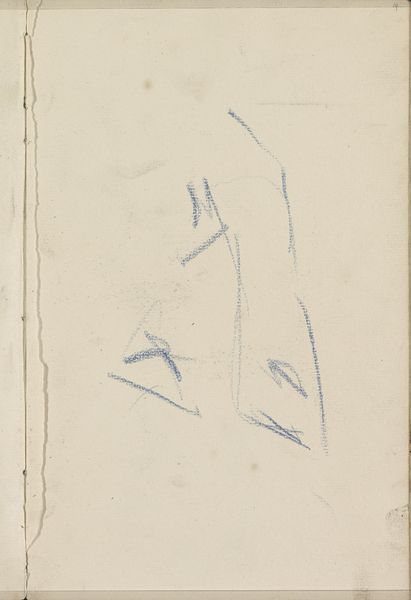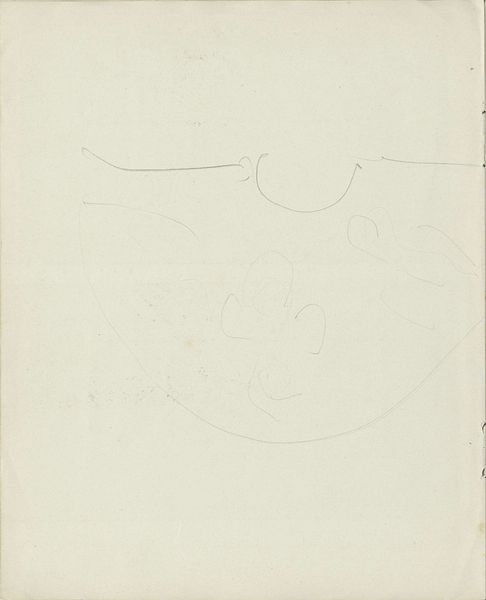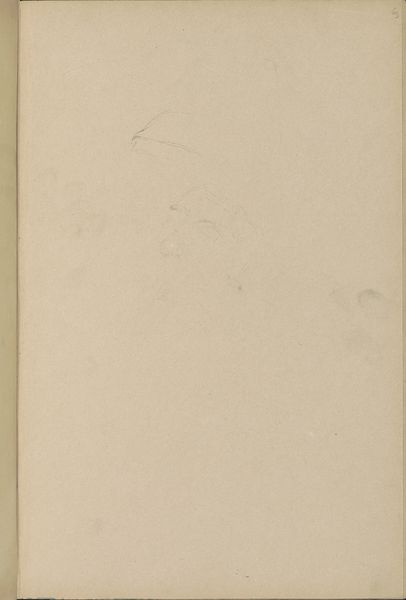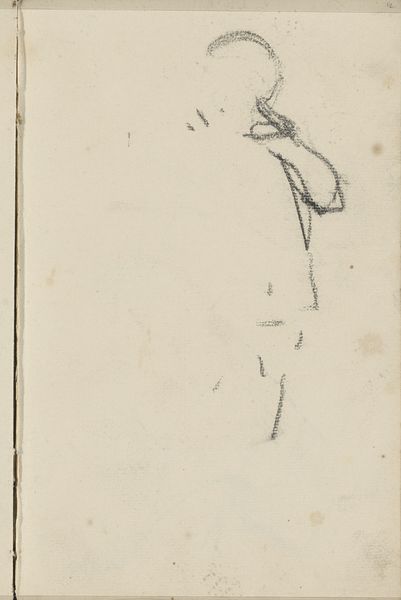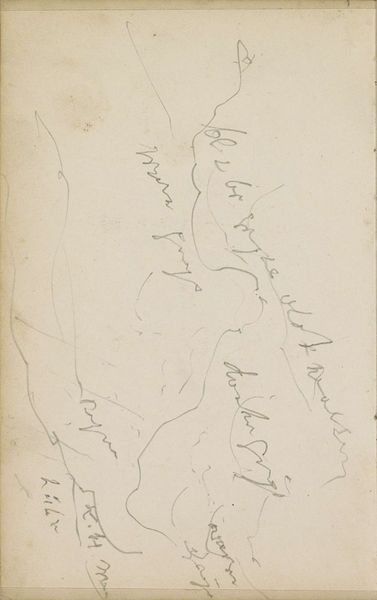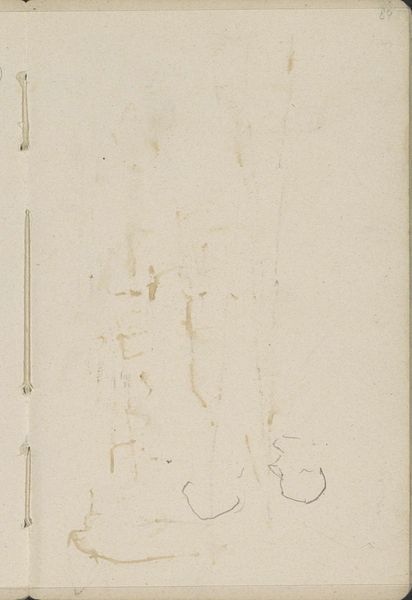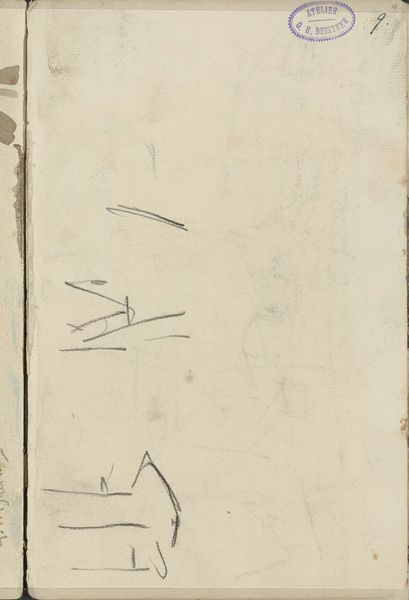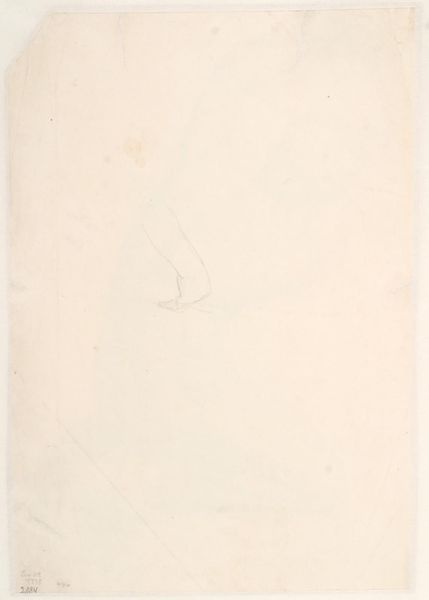
Copyright: Rijks Museum: Open Domain
Curator: This intriguing sketch is called "Twee figuurstudies," or "Two Figure Studies," crafted by Isaac Israels, likely between 1886 and 1903. What are your immediate impressions? Editor: Ghostly, incomplete. The pencil barely seems to touch the paper. There's a haunting quality to these suggestions of figures, almost as if they're fading memories. Curator: Indeed, it is a spare composition, made with just pencil on paper. You see how the artist captures fleeting glimpses of the human form, almost prioritizing speed and impression. Israels comes from a lineage of artists so this is very possibly sketches done during his formation years. The economic feasibility and simplicity of it all makes me think about art education practices from then. Editor: And it speaks volumes about ephemerality. Consider how figure drawing has historically symbolized academic art. The choice to keep the lines minimal is, itself, loaded. Is this about challenging tradition, evoking loss, or something else entirely? Curator: Certainly the sketch disrupts that academic rigor. It points towards a shift in artistic practice: towards capturing impressions of modern life, using industrial materials mass-produced but handled very informally. Editor: Beyond its materiality, though, what about the figures themselves? Their anonymity encourages the viewer to project their own narrative. Their hazy presence implies a state of transience and impermanence that might mirror social upheavals and the fin-de-siècle anxieties present back then. Curator: Agreed. There’s this push and pull in material expression: this pencil drawing can be infinitely reproduced versus an artwork laboriously created by an academy master that can potentially achieve “immortality”. Israels certainly suggests the need for new skills, art making techniques, ways of approaching reality, art as labor etc. Editor: It’s thought-provoking how a medium associated with study and prep work actually generates its own particular sense of melancholic beauty. These aren’t figures as much as phantom reminders. I wonder what drove Israels to preserve them this way. Curator: Right? A rejection of tradition and an embracing of what mass manufacturing represents. Editor: This pushes us to reconsider not just the artwork, but our own interpretations, too. What do we value in a medium traditionally positioned as ‘secondary’, and in sketches often overlooked for finished works?
Comments
No comments
Be the first to comment and join the conversation on the ultimate creative platform.
